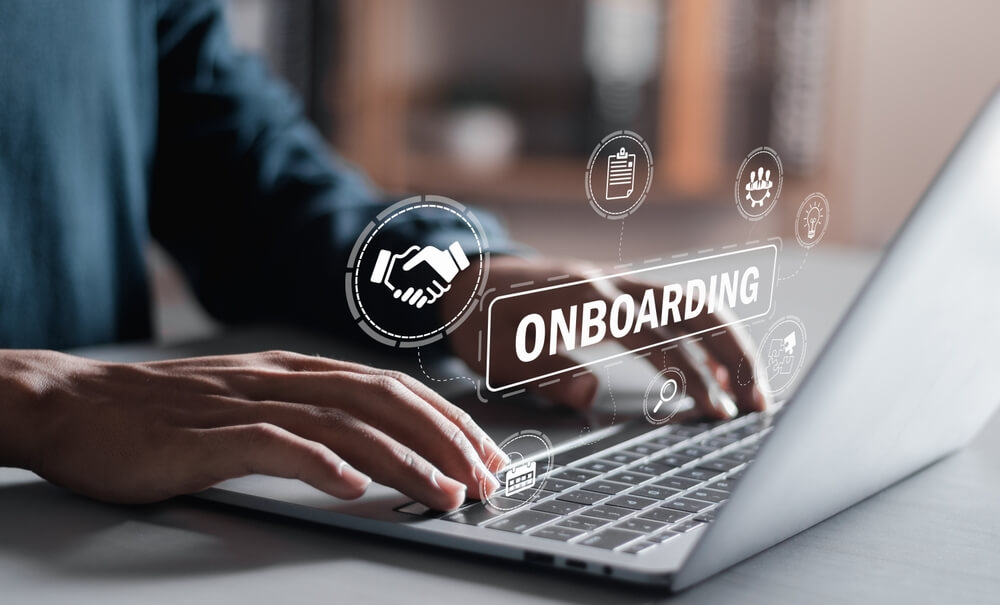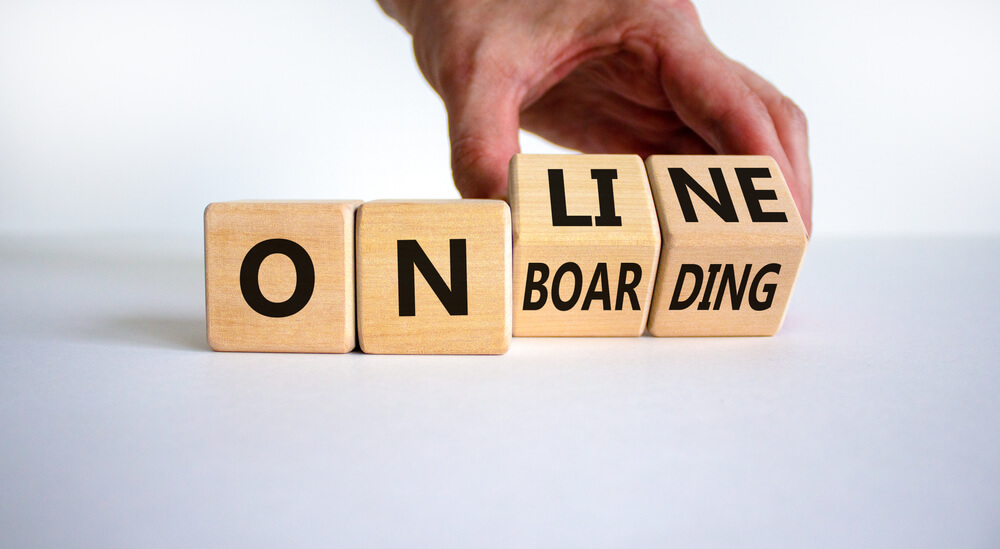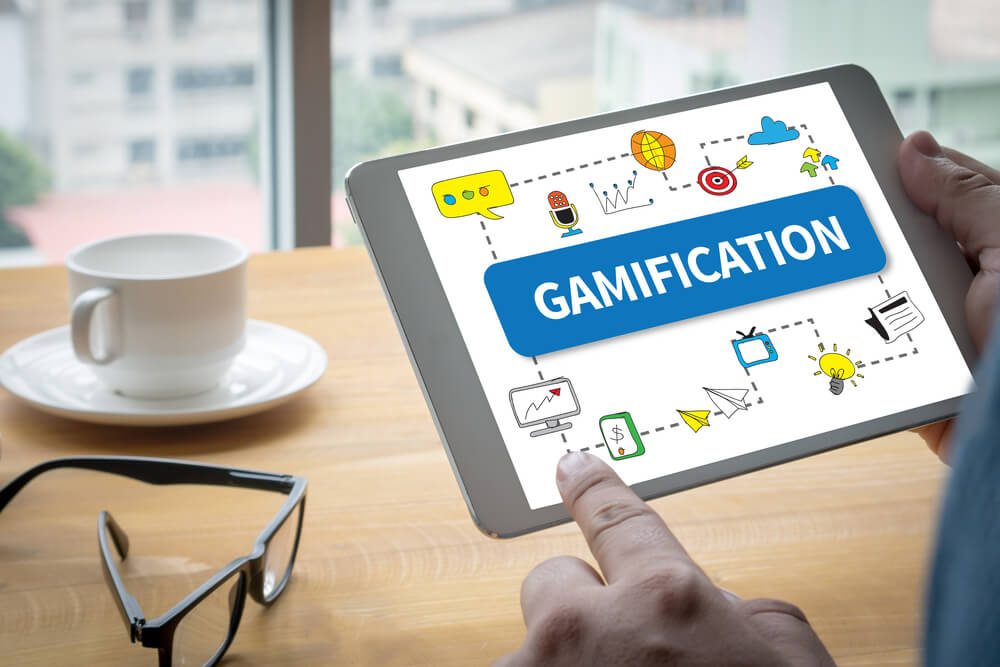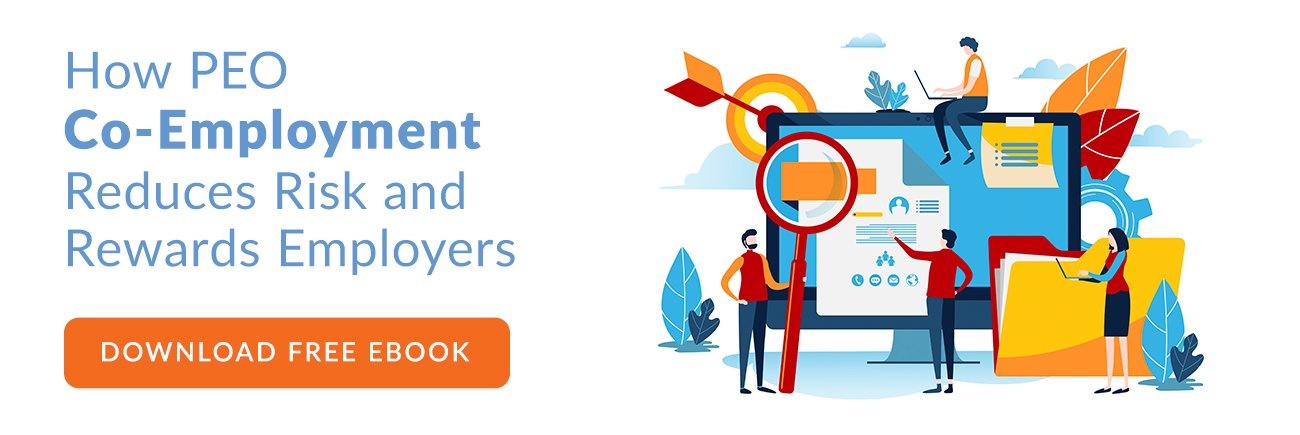Onboarding - a term that's synonymous with new beginnings and exciting opportunities. It's the process that helps transform a newcomer into a fully-functioning member of the team. But let's face it, it's not always as smooth as we'd like it to be.
In fact, a Gallup poll found that only 12% of employees strongly agree that their company excels at onboarding.
That’s why a robust onboarding process goes beyond the standard new hire orientation and HR paperwork. It's a strategic and comprehensive approach that, when done right, contributes significantly to employee retention and engagement.
To enhance your employee onboarding process, integrate these strategies:
- Cover all the basics before the first day
- Schedule a team meeting
- Organize an office tour
- Provide a partner or buddy
- Invite new hires to informal gatherings
- Incorporate virtual training games
- Organize a scavenger hunt
Below, we’ll delve into these strategies, providing a detailed look at each and offering actionable insights to help you implement them in your organization.
But first, what does traditional employee onboarding look like?
Traditional Onboarding and Its Weaknesses
Traditional onboarding tends to be a rather transactional process, focusing more on compliance and formalities than on integrating the new hire into the team. It's typically one-size-fits-all, neglecting the unique needs and skills of the individual.
As a result, the process can feel impersonal and overwhelming, leaving new hires feeling like they're just another cog in the machine.
Traditional onboarding also often lacks in consistent follow-ups and check-ins, leaving new employees feeling unsupported after their first week or so. The absence of a structured mentorship program can further compound this issue, making it more difficult for new hires to navigate their roles and responsibilities.
Modern onboarding strategies aim to address these gaps, providing a more personalized, engaging, and supportive experience for new employees. And it all starts with covering all the bases before day one.

1. Cover All the Basics Before the First Day
Starting a new job can be a daunting experience. There's a wealth of information to absorb, from company policies to role clarification. One way to alleviate this pressure is to ensure your new hires cover all the basics before their first day.
Kick things off by handling the new employee paperwork in advance. This administrative work is essential, but it often steals valuable time that could be better spent on more engaging tasks. By completing these mundane tasks beforehand, your new hires can hit the ground running, focusing more on their role and less on bureaucracy.
If you would prefer to keep everything digital (and who doesn’t?), you can take advantage of automation. Best-in-class HR software automatically handles sending, receiving, and storing data from the new employee.
Consider sharing the employee handbook ahead of time. This document is a treasure trove of information about your organizational culture and expectations. Reading it before day one gives your new hires valuable context and helps them understand what to expect.
If you aren’t interested in printing a new copy every time onboarding occurs, HR software again becomes a time-saver by providing the new employee with a portal of all the documents relevant to them.
But don't stop there.
The pre-first day period is a golden opportunity to start building a relationship with your new hires. A simple welcome message or a short video introducing the team can go a long way in making new hires feel part of the community. Remember, it's not just about imparting information—it's also about forging connections.
One way to further strengthen inter-office relations is by implementing a “buddy system.”
2. Provide a Partner or Buddy
Taking a new job can be like stepping into a new world with its own culture, expectations, and unwritten rules.
But, what if new employees had a designated partner or buddy to guide them through these initial hurdles?
This is where the concept of the buddy system comes into play.
A buddy system pairs new hires with more experienced employees who can help them navigate the maze of their new work environment. The buddy serves as a friendly face, answering questions, providing guidance, and helping the newcomer understand the company's culture and expectations.
In addition to fostering a sense of belonging, the buddy system has tangible benefits. According to the Human Capital Institute, 87% of organizations believe that buddy programs can speed up new hire proficiency. When new hires feel supported and understand their role, they can hit the ground running, contributing to the team more quickly.
But how can a company successfully implement a buddy system?
Implemenetation depends on careful pairing and clear communication of expectations. The chosen 'buddy' should be someone who is not only knowledgeable about the company and the new hire's role but also embodies the company's values and culture.
It's also important to communicate clearly what is expected of the buddy and the new hire in this partnership. This way, both parties can benefit from the experience.
After all, the most important aspect of any onboarding process is ensuring that new hires feel valued and included.

3. Invite New Hires to Informal Gatherings
Employee engagement doesn’t have to be strictly business. Sometimes, the best connections are made outside the office.
That’s why informal gatherings are an essential part of the onboarding process.
When new hires can let their hair down and interact with their colleagues in a relaxed setting, it makes them feel like they're part of the team. This can be anything from:
- Happy hours
- Team lunches
- Group coffee run
These activities can be invaluable for integrating new members into the organizational culture. In these settings, new team members can learn about the unwritten rules, the lingo, and the personalities that make the workplace unique.
Senior employees can share their experiences and give advice on navigating the workplace. This can be especially useful for helping new employees understand what is expected of them, not just in terms of their work but also in how they fit into the team.
So, don’t underestimate the power of a good old-fashioned social gathering. A team that plays together stays together.
But that’s not all – there are also innovative methods to keep the team engaged and learning. How about combining learning with a dash of fun? Let’s delve into the world of HR gamification.
4. Incorporate Gamification
To make your employee onboarding process more engaging and interactive, consider incorporating gamification elements.
Gamification is the application of game-design principles and mechanics to non-game contexts, and it can be a powerful tool to enhance the onboarding experience. By adding elements of competition, achievement, and rewards, you can create a more immersive and enjoyable onboarding journey for new employees.
One example of gamifying the onboarding process is to create interactive quizzes or challenges that new hires can complete to test their knowledge about the company, its values, policies, and procedures. These quizzes can be designed in a fun and engaging way, using visual elements, timers, and leaderboards to add excitement and motivation.
Another way to gamify onboarding is through the use of virtual badges or points. As new hires progress through different stages of their onboarding, they can earn badges or accumulate points for completing tasks, attending training sessions, or achieving milestones.
These badges and points can be displayed on their profiles or shared with colleagues, creating a sense of accomplishment and recognition. This gamified approach can foster a friendly competition among new employees and provide an incentive for active participation.
By incorporating gamification into your employee onboarding process, you can create an engaging and memorable experience that helps new hires retain information, fosters a sense of achievement, and promotes teamwork.
However, it's important to strike a balance and ensure that the gamification elements align with the overall goals and objectives of the onboarding process.
Keep in mind that the primary focus should always be on providing new employees with the necessary knowledge, resources, and support to succeed in their roles.

5. Foster Connections with Team-Building Activities
Building strong relationships among employees is crucial for a positive work environment and effective collaboration. When it comes to employee onboarding, incorporating team-building activities can help new hires connect with their colleagues, establish rapport, and feel a sense of belonging from the start.
One effective approach is to organize immersive team-building activities that allow new hires to immerse themselves in the company culture while getting to know their colleagues. These activities can take various forms, such as escape room challenges, community service projects, or even virtual team-building exercises. The key is to create opportunities for new employees to interact with their peers and build relationships in a relaxed and enjoyable setting.
By engaging in team-building activities, new hires can develop a deeper understanding of their colleagues' strengths, working styles, and personalities. This understanding fosters better communication, cooperation, and teamwork, which are essential for achieving shared goals and driving organizational success.
Team-building activities also provide a platform for new employees to showcase their skills, contribute ideas, and demonstrate their value to the team early on.
Not only do team-building activities enhance social connections, but they also have a positive impact on employee morale and engagement. When employees feel connected and supported by their colleagues, they are more likely to be motivated, satisfied, and committed to their work.
Team-building activities create a sense of unity and shared purpose, which contributes to a positive company culture and boosts overall employee engagement.
However, like with gamification, it’s essential to align team-building activities with the intent behind the onboarding process.
Enhancing Employee Onboarding through HR Outsourcing
Improving the employee onboarding process is vital for organizations seeking to create a positive and productive work environment from day one. Above, we've explored various strategies and tactics to enhance your onboarding process, from buddy systems to gamification. Now, let's delve into how HR outsourcing with a Professional Employer Organization (PEO) can be an ideal solution to further elevate your onboarding efforts.
A PEO is a specialized HR outsourcing partner that provides comprehensive HR solutions to businesses. By partnering with a PEO, organizations can tap into a wealth of expertise and resources to streamline their HR processes, including onboarding.
HR outsourcing with a PEO offers numerous benefits that can significantly impact your onboarding process. One key advantage is access to state-of-the-art HR software which simplifies and streamlines various onboarding tasks.
A PEO software solution encompasses applicant tracking, employee onboarding, electronic document management, and more. This software is often offered at no additional cost, providing small and medium-sized businesses with advanced tools to efficiently manage and optimize the onboarding experience.
PEOs specialize in managing various HR functions, including onboarding, compliance, payroll, benefits administration, and employee relations. Their experience and knowledge in these areas ensure that your onboarding process adheres to best practices and compliance standards, minimizing errors and creating a seamless experience for new hires.
PEOs also offer comprehensive support and guidance throughout the onboarding journey. They can assist in developing customized onboarding plans tailored to your organization's unique needs and culture.
By collaborating with a PEO, you gain access to HR professionals who understand the intricacies of effective onboarding and can provide valuable insights and recommendations.
You also free up internal resources and time, allowing your HR team to focus on strategic initiatives and employee development. This partnership enables you to create a seamless and efficient onboarding process that leaves a lasting positive impression on new hires.
From accessing state-of-the-art HR software to benefiting from their HR administration expertise, partnering with a PEO streamlines your onboarding process and ensures a smooth transition for new employees. Embrace the power of HR outsourcing with a PEO to enhance your onboarding and unlock the full potential of your workforce.



